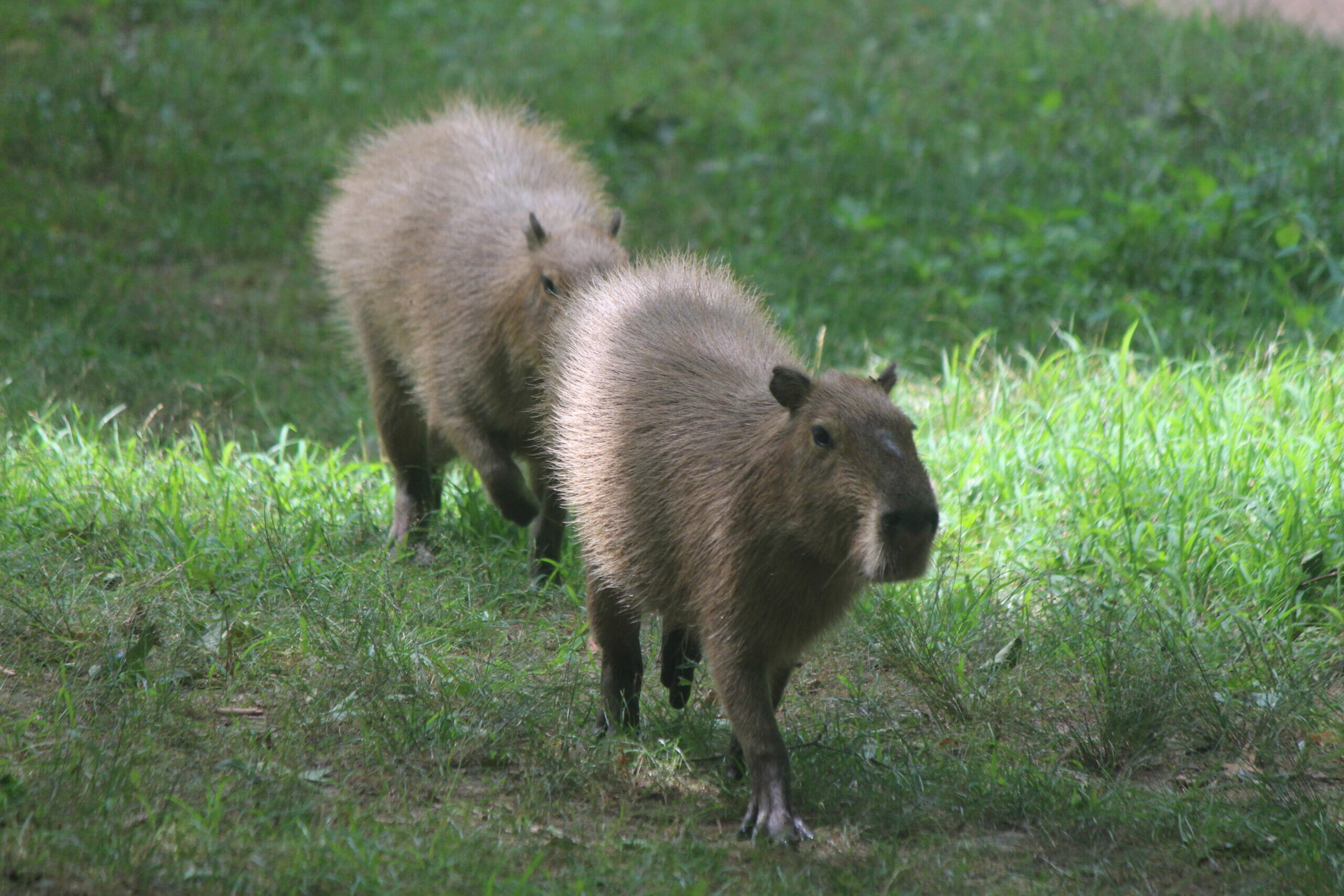
Capybara
Hydrochaeris hydrochaerisClass: Mammalia Order: Rodentia Family: Caviidae
Size
Length: 24-30 in
Weight: 77-150 lbs
Diet
Capybaras are herbivores and primarily feed on aquatic plants.
Lifespan
Lifespan (wild): 6 years
Lifespan (captivity): 12 years
Habitat & Range
Capybaras are native to South America and are found in areas where they can easily access water. They often live in lowland forests and near marshland.
Interesting Facts
- Capybaras are the largest rodent species. Some capybaras reach weights of about 150 lbs.
- They are semi-aquatic and live near swamps, rivers and ponds in South America. In fact, its scientific name is derived from the Greek words “hydro” meaning water and “choiros” which means pig. They can hold their breath for up to 5 minutes.
- They are well suited for aquatic life. Their feet are webbed, and their eyes, ears, and nostrils are located close to the top of their head. This adaptation allows them to be aware of their surroundings while most of their body is submerged underwater.
- Capybaras communicate through many vocalizations such as barks, whistles, grunts, and squeals. Babies and their mothers also communicate with each other through purrs and chirps.
Conservation Status
Least Concern
Threats
Capybaras are common and have a stable population. They are occasionally hunted for their meat and hide.
